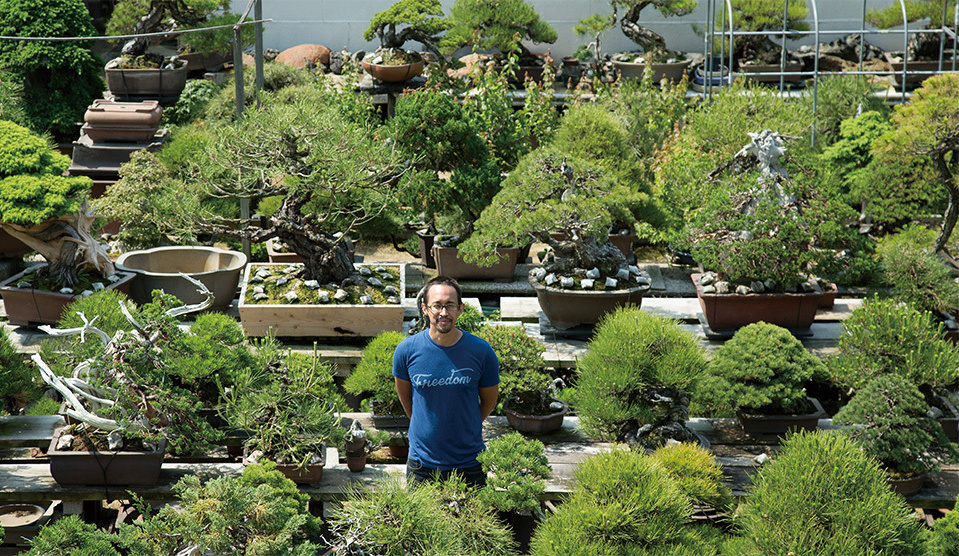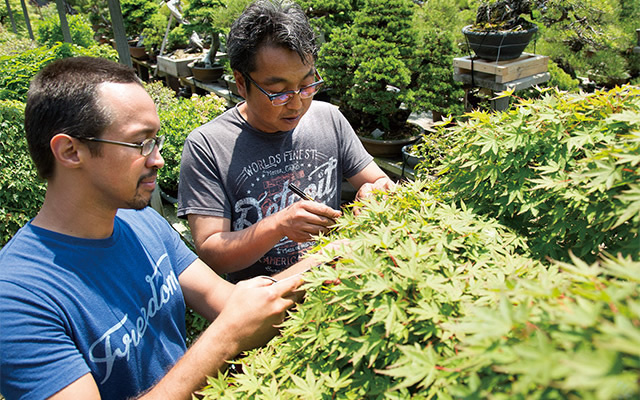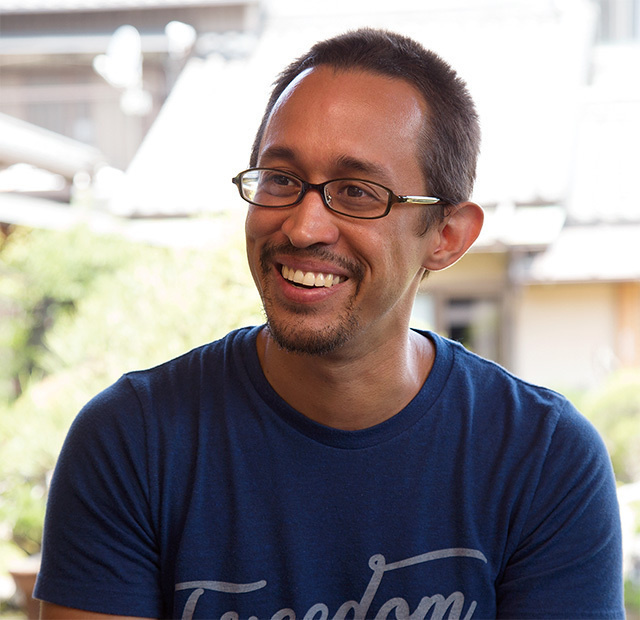“My friends said I was crazy and my parents weren’t happy when I told them I chose bonsai for my career,” smiles Costa Rican bonsai artist Juan Andrade, recalling the day he decided to leave home to pursue his dream in Japan.
Andrade started doing bonsai at the age of 15. Growing up in Costa Rica, where over half of the land preserves national forests and even the smallest home boasts a flower garden, nature ran through his veins. “We have great appreciation for nature in Costa Rica, just like the Japanese people. That's probably why I became fascinated with bonsai.”
Before (left) and after (right) 8 hours of wiring and cutting. It will take several years for the bonsai branches to attain their desired natural shape.
Unfortunately, Andrade had no teachers to guide him in Costa Rica, and only a small bonsai club and the Internet were his sources of knowledge. So when he passed the national university entrance exam with the second highest score in the nation, he chose to major in plant biology hoping to acquire knowledge that could be used for bonsai. Even after graduating from university, he would use his holidays to travel abroad to take bonsai classes from various professional teachers.
His family and friends thought Andrade had a successful career and life in Costa Rica, but one day, he made a sudden detour. On that day, Andrade went home to tell his parents that he was going to Japan to become a bonsai artist. “Bonsai is considered a rich man’s hobby, not a career in my country, and I am not even from a rich family. So, I sold my car, my apartment and basically everything I had to go to Japan.” Andrade continued to explain that when he went travelling abroad to take bonsai classes, he was actually searching for a bonsai master who would accept him as an apprentice. “I stayed true to my dream and it took me 15 years just to become an apprentice.”
Andrade demonstrating on stage at the 8th World Bonsai Convention, held in April 2017 in Japan.
Juan Andrade
Born in Santa Ana, Costa Rica.
Majored in plant biology at the University of Costa Rica. Currently based in Costa Rica, he travels around the world to teach and promote bonsai.
The bonsai master that Andrade found was Junichiro Tanaka, the fourth-generation bonsai master of Aichi-en, established in 1896. “Being an apprentice requires a very strong commitment,” cautions Andrade. Taking just a day off each month and a week off a year, Andrade worked for three years in Achi-en, watering and weeding in the nursery and its fields where new stock grew, and visited customers’ homes to care for their trees. Only at night did he have time for his own projects, wiring, cutting, and repotting trees, and to interact with his master to discover new techniques. Typically, it takes around five to six years to complete an apprenticeship, but Andrade took only half this time.
Andrade explains that having studied karate in his childhood years also helped speed up his learning. “In karate, during the detailed patterns of movements, each part of the body must be balanced with the other parts. When I work with bonsai, I break down the tree into its elements of branches, trunks, and roots, applying the same principle.” Andrade adds that cultivating and coaxing out each tree’s natural beauty entails a very personal relationship. “Master Tanaka always reminded me that bonsai is a collaboration between man and nature. Every effort you put into a tree, the tree will give back to you, becoming healthier, more beautiful, or more blooming.”
When asked about the most difficult aspect of bonsai, Andrade explains that nothing is easy, but grasping Japanese aesthetics, the wabi-sabi , took the longest. “To put it simply, Western art is about flair and impact, and is very showy. On the contrary, Japanese aesthetics are about acceptance of transience and finding beauty in imperfection. I gradually came to understand this in my daily life in Japan by observing traditional architecture and gardens.” Andrade explains, “the best bonsai transmit peace of mind.”
Today Andrade travels around the world to demonstrate the tree shaping art. He even demonstrated with Master Tanaka on the stage before bonsai fans from all over the world at the 8th World Bonsai Convention held in April 2017 in Japan.
Andrade says that doing bonsai, “I do not feel like I am working. I just feel like I am living every single moment of my day. Everybody wants that out of life. I want to keep on doing bonsai till the day I cut a bonsai, go to bed, and die.” Andrade is eager to share his passion for bonsai with others. He envisions creating bonsai academies around the world where students can learn from a variety of teachers with different specialties to find their own Bonsai Dream.



































